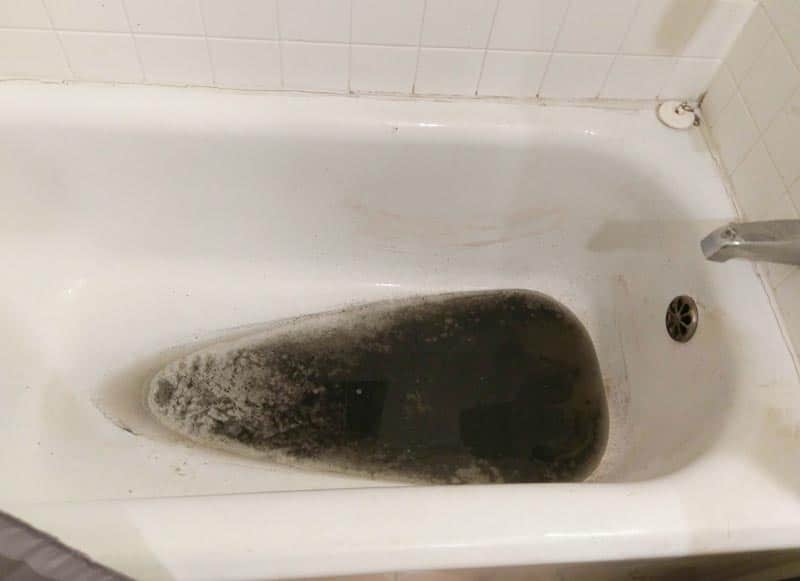We've come across this article on Why is There Sewage Coming Up Through the Bathtub listed below on the internet and thought it made good sense to talk about it with you on this site.

Sewer back-up in the bath tub can be an upsetting and unhygienic issue for any kind of home owner. Not just is it troublesome, but it likewise presents significant health threats and suggests underlying concerns with the plumbing system. Comprehending why sewer is coming up through the bath tub is critical for taking ideal activity to attend to the trouble effectively.
Intro to the Issue
Comprehending the Problem
When sewer draws back up into the bath tub, it's a clear indicator of a trouble with the drain system. The wastewater that needs to be moving far from your home is rather discovering its back into your home, which can bring about substantial damages and health hazards.
Potential Causes
Several variables can add to sewer backup in the tub. From obstructions in the sewage system line to concerns with the plumbing framework, recognizing the root cause is necessary for finding an option.
Usual Factors for Sewage Backup
Clogs in the Sewer Line
Among the most typical causes of sewage backup is an obstruction in the sewage system line. This can happen as a result of the build-up of particles, oil, or international things in the pipes, preventing proper flow and creating sewage to support right into your tub.
Tree Root Invasion
Tree origins looking for dampness and nutrients can penetrate sewer lines through tiny cracks or joints. With time, these origins can grow and increase, creating substantial damage to the pipelines and resulting in sewage back-up problems.
Aging Framework
Older homes may have obsoleted plumbing systems that are extra susceptible to corrosion, cracks, and deterioration. As pipes age, they become much more susceptible to leaks and obstructions, enhancing the chance of sewer back-up incidents.
Heavy Rainfall or Flooding
Throughout periods of heavy rainfall or flooding, the drain system may come to be overwhelmed with excess water, triggering backups and overflows. This can result in sewer supporting right into bath tubs and other components inside the home.
Wellness Threats Related To Sewage Backup
Contamination of Water
Sewage back-up can infect the water supply in your house, posing a severe health risk to you and your household. Exposure to contaminated water can cause stomach concerns, skin infections, and various other ailments.
Spread of Condition
Sewer has damaging bacteria, viruses, and parasites that can trigger a range of illness, including hepatitis, cholera, and gastroenteritis. Entering contact with sewer or contaminated surface areas puts you in danger of infection.
Mold and mildew Growth
Wetness from sewer back-up can develop perfect conditions for mold and mildew growth in your home. Mold spores can worsen breathing issues and trigger allergies in sensitive individuals, making timely clean-up necessary.
Indications of Sewage Back-up
Foul Odors
Unpleasant odors emanating from drains pipes or fixtures, especially in the bathroom, might show sewer backup concerns. These smells are typically solid and consistent, indicating a problem that requires prompt focus.
Slow Draining Fixtures
Bath tubs, sinks, and commodes that drain slowly or not whatsoever could be experiencing sewage backup. If several fixtures are affected simultaneously, it's likely that the concern originates from a typical factor, such as the main sewage system line.
Gurgling Sounds
Strange gurgling or bubbling sounds coming from drains when water is running somewhere else in the house are indicative of air caught in the plumbing system. This air buildup can result from sewage back-up and need to be examined promptly.
Immediate Actions to Take
Switching Off Water
In the event of sewage back-up, it's necessary to turn off the supply of water to avoid more contamination and damage. Find the major water shutoff valve in your home and closed it off until the problem can be fixed.
Speaking To a Professional Plumber
Dealing with sewer back-up is not a DIY work. Call an accredited plumber with experience in taking care of sewage-related issues to assess the circumstance and perform needed fixings or clean-ups.
Avoiding Contact with Contaminated Water
Till the sewer backup is fixed, stay clear of contact with polluted water to avoid the spread of germs and microorganisms. Wear protective gear if you must remain in the afflicted location and wash your hands completely later.
Preventive Measures
Normal Maintenance of Sewage System Lines
Set up normal assessments and maintenance of your drain lines to recognize and resolve potential problems before they rise right into major troubles. This can consist of clearing out debris, inspecting for tree origin breach, and fixing any type of broken pipes.
Mounting Backwater Valves
Consider installing bayou shutoffs in your plumbing system to stop sewage from receding into your home throughout durations of heavy rainfall or flooding. These valves instantly close when water draws back up, safeguarding your building from contamination.
Appropriate Disposal of Household Waste
Stay clear of purging anything apart from toilet paper and human waste down the commode to prevent obstructions and blockages in the sewer line. Dispose of grease, oil, and various other house chemicals effectively to lessen the risk of plumbing issues.
Cleaning Up After Sewage Back-up
Disinfection Procedures
Thoroughly decontaminate and sanitize influenced locations after sewage back-up to eliminate hazardous bacteria and stop mold growth. Usage proper cleaning items and safety gear to make sure risk-free and reliable clean-up.
Reconstruction of Influenced Locations
Fix any type of damages to floor covering, wall surfaces, or components brought on by sewage back-up. Depending on the level of the damages, you might need to change carpets, drywall, or various other products to restore your home to its pre-loss condition.
Why Is Water Backing Up in My Bathtub When I Flush My Toilet?
What to do about a sewer line clog
First, don’t bother with plunging. No amount of plunging will dislodge the clog in a sewer line. The clog is too far away. Plungers are for clogs in the toilet itself, not the sewer line. Plus, the most likely causes of a sewer clog are:
Tree roots Flushed toys or feminine products Grease buildup Those items don’t move easily. And in the case of tree roots, the roots need to be cut out of the pipe and the pipe will need to be repaired.
You’ll need a closet auger. A closet auger is a type of plumber’s snake with a protective cover to keep from scratching the delicate porcelain toilet. If the clog is further down, you may need to remove the toilet or use one of your cleanouts to get to the clog.
We also recommend doing a video inspection of the drain to ensure that the cause of the clog has been completely removed. Otherwise, you could have the same problem again in a few days or weeks.
https://mspplumbingheatingair.com/blog/why-is-water-backing-up-in-my-bathtub-when-i-flush-my-toilet

I recently found that page about What To Do If Sewage Starts Backing Up Into the Shower while doing a search on the internet. Those who enjoyed our blog posting if you please don't forget to share it. Bless you for your time. Revisit us soon.
Article